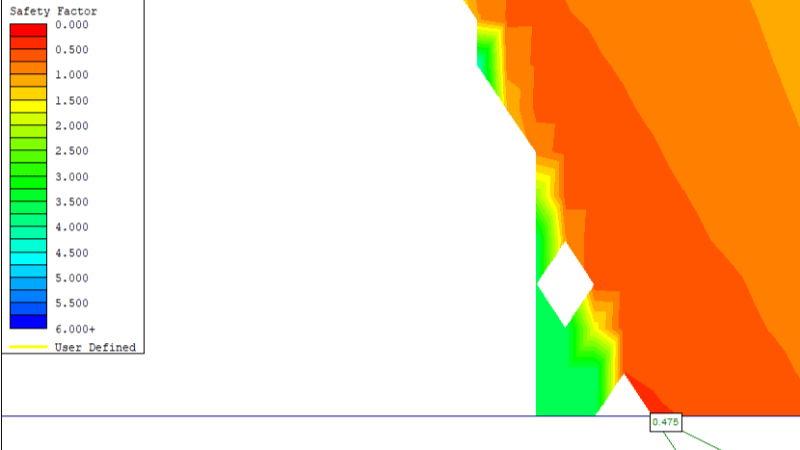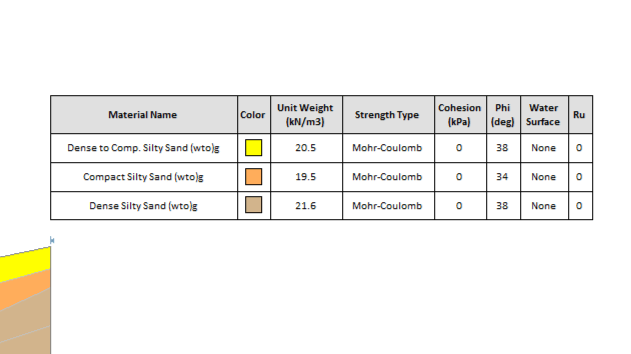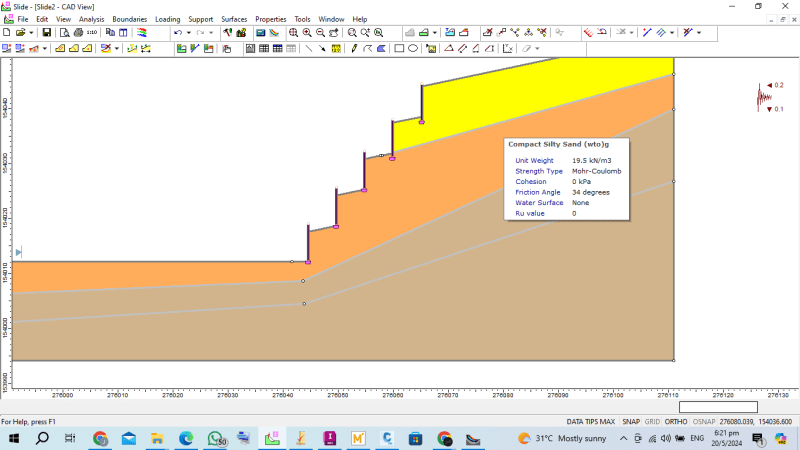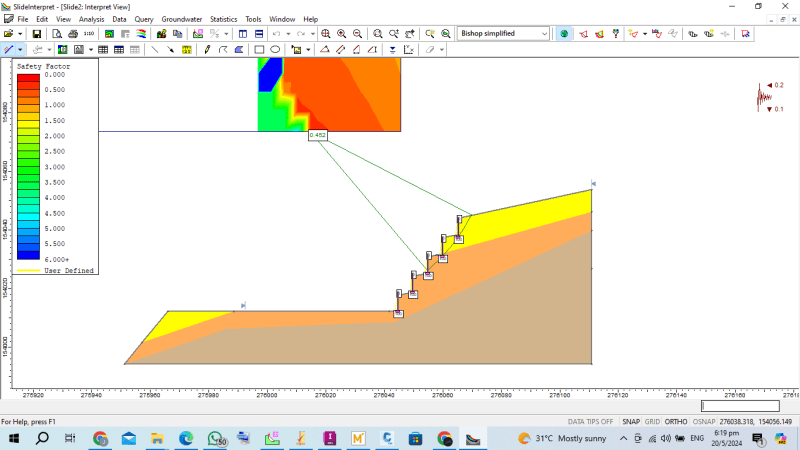Navigation
Install the app
How to install the app on iOS
Follow along with the video below to see how to install our site as a web app on your home screen.
Note: This feature may not be available in some browsers.
More options
You are using an out of date browser. It may not display this or other websites correctly.
You should upgrade or use an alternative browser.
You should upgrade or use an alternative browser.
Slope Stability
- Thread starter JahmaiS_
- Start date
- Status
- Not open for further replies.
geotechguy1
Civil/Environmental
Because the driving force is greater than the resisting force? Sorry, cheek answer.
What are the rest of the properties of the different soil layers? How are those walls modelled - as impenetrable / infinite strength? Can you post a sharper image - scale is hard to read. It looks like you have a pseudo-static earthquake load applied - what does your static case look like?
To me it looks like you have a 1H:1V overall slope and the only soil parameters are phi=34 with 0 cohesion. So yeah that will have an FOS < 1 with an earthquake. It will probably be less than 1 in static as well or close. You should end up with lowest FOS for the shallowest possible failure surface using your search technique using c' = 0, which although I can't tell for sure since I don't have all the details is probably passing right under the toe of your walls in this case.
Would you like to know more?
What are the rest of the properties of the different soil layers? How are those walls modelled - as impenetrable / infinite strength? Can you post a sharper image - scale is hard to read. It looks like you have a pseudo-static earthquake load applied - what does your static case look like?
To me it looks like you have a 1H:1V overall slope and the only soil parameters are phi=34 with 0 cohesion. So yeah that will have an FOS < 1 with an earthquake. It will probably be less than 1 in static as well or close. You should end up with lowest FOS for the shallowest possible failure surface using your search technique using c' = 0, which although I can't tell for sure since I don't have all the details is probably passing right under the toe of your walls in this case.
Would you like to know more?
- Thread starter
- #3
The static conditions without the earthquake load is still failing at a FOS of 0.7.
The soil has little to no cohesion, it is unfortunately unfavorable building conditions, and the area is located in a fault zone, hence the earthquake load applied. I am a final year student, to provide some context. Even though we were taught in class, I am humbly reaching out to expert minds to find a way to stabilize this particular slope scenario.
To your other questions asked,
The wall is not impenetrable or has infinite strength. They have an active force application of 100kN
Yes, the failure surface passes under the toe of the wall and does so each time I increase the depth of the wall to pass the failure slope.
I am considering reducing the overall slope and see if that makes a difference.
What I would like to know is recommendations to achieve an acceptable FOS.


The soil has little to no cohesion, it is unfortunately unfavorable building conditions, and the area is located in a fault zone, hence the earthquake load applied. I am a final year student, to provide some context. Even though we were taught in class, I am humbly reaching out to expert minds to find a way to stabilize this particular slope scenario.
To your other questions asked,
The wall is not impenetrable or has infinite strength. They have an active force application of 100kN
Yes, the failure surface passes under the toe of the wall and does so each time I increase the depth of the wall to pass the failure slope.
I am considering reducing the overall slope and see if that makes a difference.
What I would like to know is recommendations to achieve an acceptable FOS.


geotechguy1
Civil/Environmental
Extending the piles / wall deeper in the model will drive the failure surface deeper which will increase the FoS, yes.
What is the 100 kN active force application coming from? An anchor? Or shear resistance of the pile on it's own?
What is the 100 kN active force application coming from? An anchor? Or shear resistance of the pile on it's own?
Your wall is failing because you essentially have a 1H:1V (45 degree), or steeper, slope with predominately 34 degree soil and no cohesion. I think you need more horizontal setback between the terraced walls in order to flatten the slope to probably 2H:1V or you need ground anchors or geogrids for each wall section. Also, have you considered live load surcharge(s) behind the wall(s)?
This is a student question please use the student forum, going to PEinc point the analysis your slope is steeper than your friction angle, infinite slope analysis FOS is calculated by Tan phi over Tan slope angle, Duncan's book has a good discussion on infinite slopes. For this problem, which has no groundwater, you would need to determine the stability of each step and then the overall stability of the slope from the crest to the toe. Acceptable FOS criteria depends on jurisdiction and the loading conditions which must be considered also vary, examples of loadings include surcharge at the crest, cracks, and earthquakes.
- Status
- Not open for further replies.
Similar threads
- Locked
- Question
- Replies
- 2
- Views
- 8
- Replies
- 0
- Views
- 8
- Replies
- 4
- Views
- 10
- Replies
- 2
- Views
- 8
- Replies
- 5
- Views
- 11


